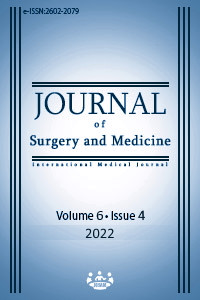A systematic assessment of adverse event reporting in selected state hospitals in Sri Lanka
Keywords:
Adverse event reporting, Patient safety, Hospitals, Sri LankaAbstract
Background/Aim: Patient safety is an integral component of health care. Adverse event reporting plays a key role in ensuring patients’ safety. The Sri Lankan Ministry of Health has introduced guidelines and a system of adverse event reporting. Here we assess the pattern of adverse event reporting in selected 46-line ministry hospitals. Methods: The adverse events reported in the year 2019 were analyzed. The frequency of reporting of each event was assessed. The issues in relation to adverse event reporting and root causes were assessed through focus group discussions with selected hospital administrators. Results: Most reported events were “patient falls”, contributing to 30.46% of the total. Availability of guidelines, well-established quality management units, and a non-punitive non-fault-finding approach to adverse event reporting and analysis process were identified as strengths of the system. But lengthy paper-based documentation process was recognized as a major weakness. Conclusion: Although the state health sector of Sri Lanka has an established system of adverse event reporting, it is mostly limited to non-clinical events such as falls. Fear of blame and shame among staff and the lengthy paper-based reporting system have negatively affected the process.
Downloads
References
Battles JB, Stevens DP. Adverse event reporting systems and safer healthcare. Qual Saf Health Care. 2009 Feb 1;18(1):2–2.
World Health Oraganization. Patient safety [Internet]. 2020. Available from: https://www.who.int/patientsafety/en/
Robertson JJ, Long B. Suffering in Silence: Medical Error and its Impact on Health Care Providers. J Emerg Med. 2018 Apr;54(4):402–9.
Battles JB, Stevens DP. Adverse event reporting systems and safer healthcare. Qual Saf Health Care. 2009 Feb 1;18(1):2–2.
Ministrty of Health Sri Lanka. General Circular 01-38/2016; Implementation of Adverse Event Reporting & Readmission Forms [Internet]. 2016. Available from: http://www.health.gov.lk/CMS/cmsmoh1/upload/english/01-38-2016-eng.pdf
Ministry of Health, Sri Lanka. General Circular Letter No. 01-29/ 2009 National Quality Assurance Programme in Health. 2009.
Runciman W, Hibbert P, Thomson R, Van Der Schaaf T, Sherman H, Lewalle P. Towards an International Classification for Patient Safety: key concepts and terms. Int J Qual Health Care. 2009 Feb 1;21(1):18–26.
Flanagan JC. The critical incident technique. Psychol Bull. 1954;51(4):327–58.
Cousins DH, Gerrett D, Warner B. A review of medication incidents reported to the National Reporting and Learning System in England and Wales over 6 years (2005-2010): Review of medication incidents over 6 years. Br J Clin Pharmacol. 2012 Oct;74(4):597–604.
Gong Y, Kang H, Wu X, Hua L. Enhancing Patient Safety Event Reporting: A Systematic Review of System Design Features. Appl Clin Inform. 2017;08(03):893–909.
Farley DO, Haviland A, Champagne S, Jain AK, Battles JB, Munier WB, et al. Adverse-event-reporting practices by US hospitals: results of a national survey. Qual Saf Health Care. 2008 Dec 1;17(6):416–23.
Cooper J, Edwards A, Williams H, Sheikh A, Parry G, Hibbert P, et al. Nature of Blame in Patient Safety Incident Reports: Mixed Methods Analysis of a National Database. Ann Fam Med. 2017 Sep;15(5):455–61.
Mahajan RP. Critical incident reporting and learning. Br J Anaesth. 2010;105(1):69–75.
Wu J-H, Shen W-S, Lin L-M, Greenes RA, Bates DW. Testing the technology acceptance model for evaluating healthcare professionals’ intention to use an adverse event reporting system. Int J Qual Health Care. 2007 Dec 11;20(2):123–9.
Stergiopoulos S, Brown CA, Felix T, Grampp G, Getz KA. A Survey of Adverse Event Reporting Practices Among US Healthcare Professionals. Drug Saf. 2016 Nov;39(11):1117–27.
Anderson JE, Kodate N. Learning from patient safety incidents in incident review meetings: Organisational factors and indicators of analytic process effectiveness. Saf Sci. 2015 Dec;80:105–14.
Sarvadikar A, Prescott G, Williams D. Attitudes to reporting medication error among differing healthcare professionals. Eur J Clin Pharmacol. 2010 Aug;66(8):843–53.
Waring JJ. Beyond blame: cultural barriers to medical incident reporting. Soc Sci Med. 2005 May;60(9):1927–35.
Moumtzoglou A. Factors impeding nurses from reporting adverse events: Adverse events in nursing. J Nurs Manag. 2010 Feb 5;18(5):542–7.
Downloads
- 703 572
Published
Issue
Section
How to Cite
License
Copyright (c) 2022 S.M.N.S.M. Mallawarachchi, G.S.K. Dharmarathna
This work is licensed under a Creative Commons Attribution-NonCommercial-NoDerivatives 4.0 International License.
















